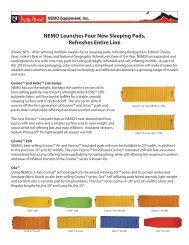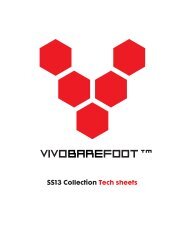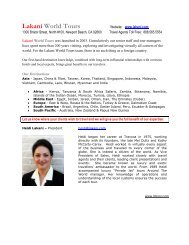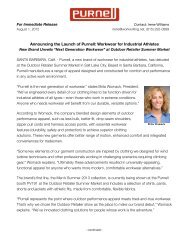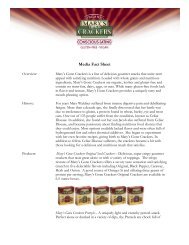Lodge Cast Iron 2012 - GoExpo
Lodge Cast Iron 2012 - GoExpo
Lodge Cast Iron 2012 - GoExpo
You also want an ePaper? Increase the reach of your titles
YUMPU automatically turns print PDFs into web optimized ePapers that Google loves.
An employee inserts a new pattern into the Disamatic, the machine that makes our sand molds. There are two halves to the pattern.<br />
When these two halves come together we will pour our metal mixture in between them.<br />
<strong>Lodge</strong> uses sand molds, a middle age technology. Sand molding remains the best and most practical way to produce cast iron.<br />
Molten iron is so hot it would melt almost any other material. But the sand can hold its own against the heat.<br />
This is how it works. Compressed air forces moist sand into a pattern that is squeezed at 700 to 1000 pounds per square inch to<br />
form the exact contour of our skillet. Exact reverse impressions of both sides of the pan are formed in the cavity in the sand. The<br />
molten iron fills the cavity, creating our cookware.<br />
In pouring our molds, the liquid metal must be between 2,480 and 2,520 degrees. This temperature produces the best finish<br />
for the castings. Following the shake off, the sand is captured, cooled and recycled.<br />
sand removal<br />
From here our cookware begins its cleaning process. After the molten metal is poured into the sand mold, the cookware moves<br />
along a vibrating conveyer belt to shake off the molding sand.<br />
The cookware is then transferred to a large rotating drum, where the cookware tumbles in a bed of iron media, which removes<br />
much of the remaining sand.






